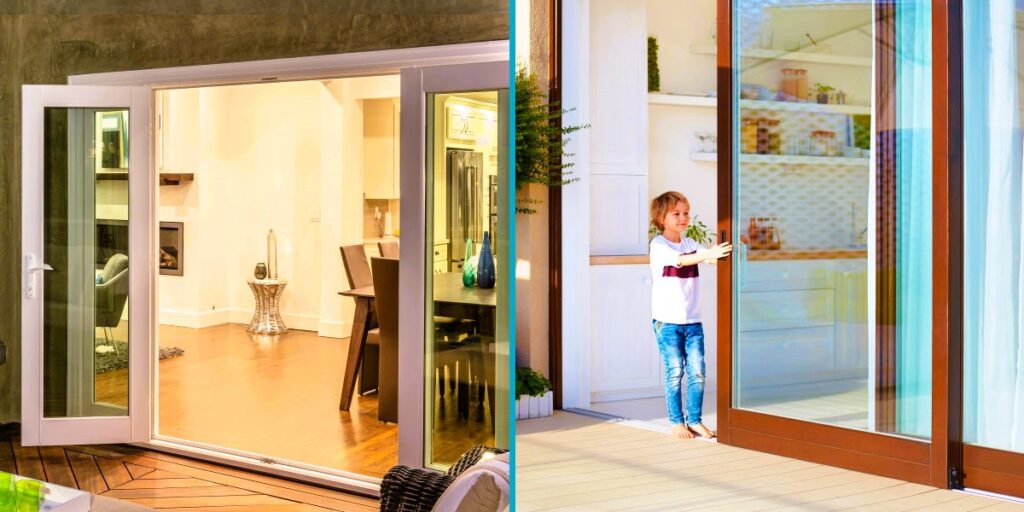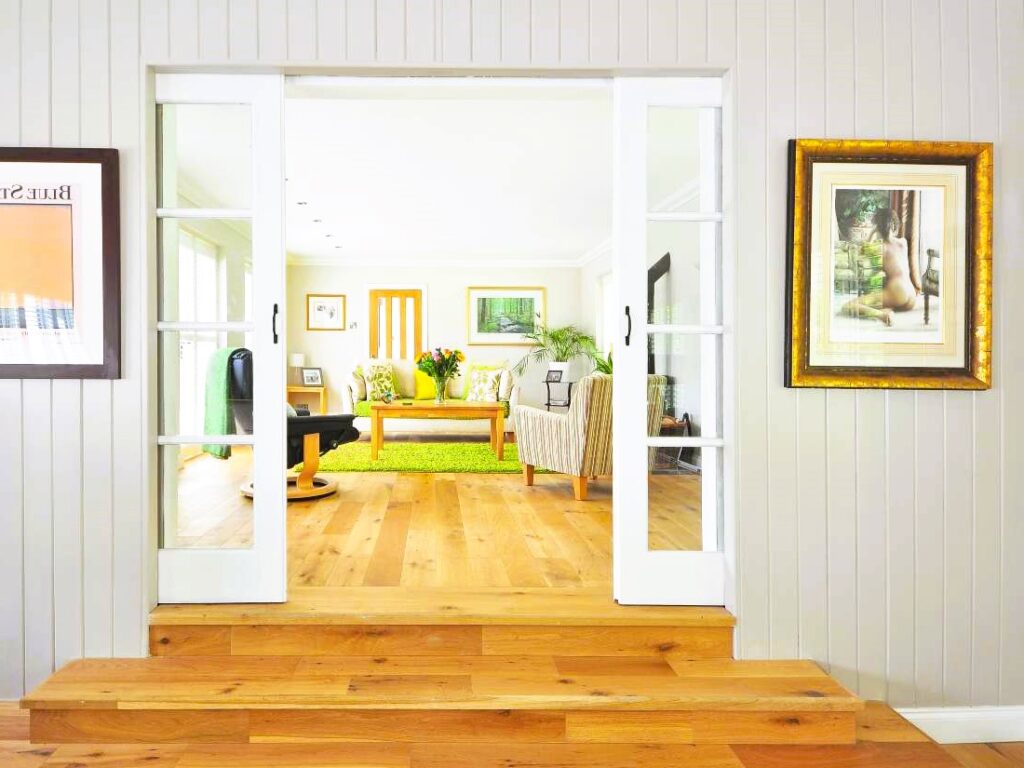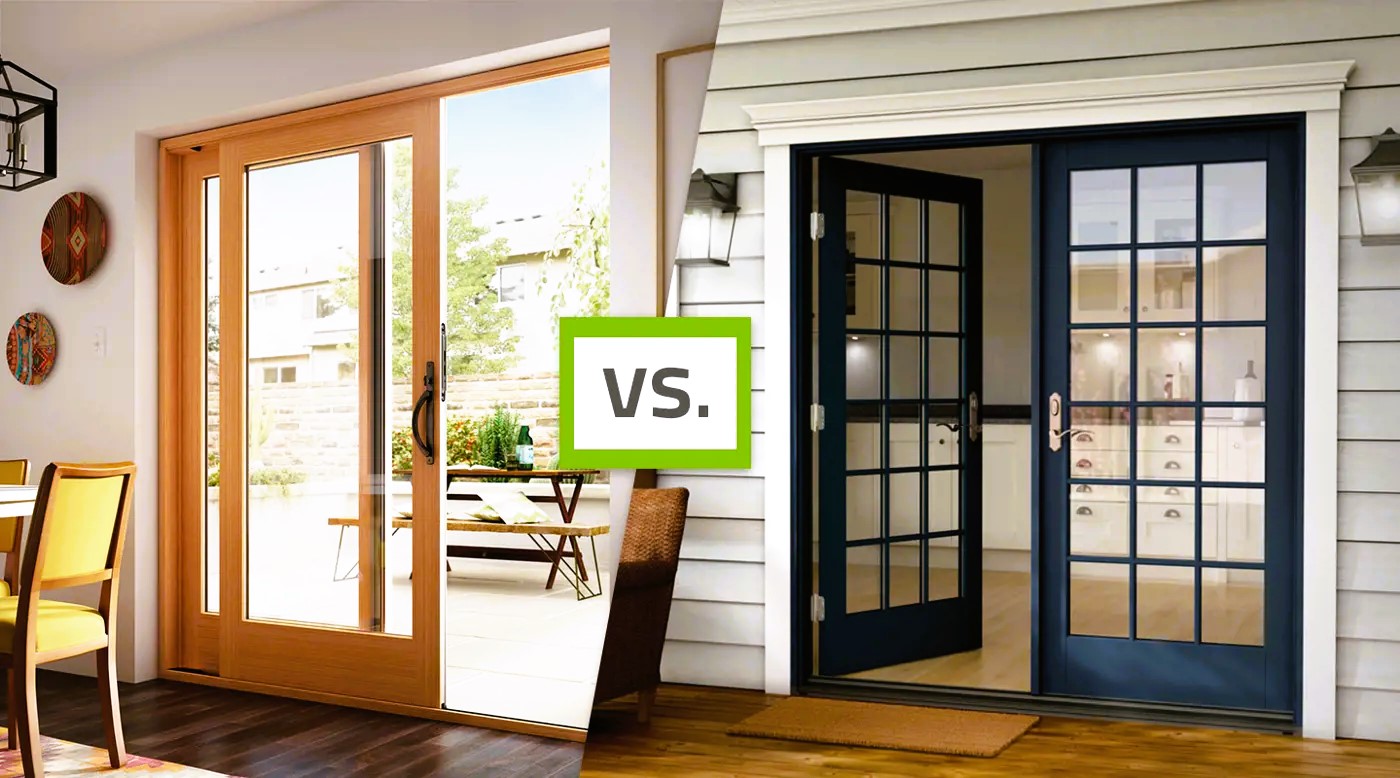Patio doors serve as a bridge between your indoor and outdoor living spaces, providing access, natural light, and a connection to the surrounding environment. When it comes to choosing the right patio doors for your home, one of the fundamental decisions you’ll need to make is whether to go for sliding or hinged doors. Each style has its own set of advantages and drawbacks, and your choice can significantly impact the functionality and aesthetics of your space. In this article, we will explore the pros and cons of sliding and hinged patio doors to help you make an informed decision.
Sliding Patio Doors
Pros:
1. Space-Saving Design: Sliding doors open horizontally, gliding along a track. This design doesn’t require extra space for the door’s swing, making them ideal for areas with limited space, such as small patios or decks.
2. Unobstructed Views: Sliding doors typically feature larger glass panes and narrower frames, offering unobstructed views of the outdoors and allowing more natural light to enter your home.
3. Easy Operation: Sliding doors are easy to operate, with a simple push or pull to open and close. They are especially convenient for individuals with limited mobility.
4. Energy Efficiency: Many sliding doors come with energy-efficient features, such as low-E glass and multi-point locking systems, which help maintain indoor temperatures and reduce energy costs.
5. Modern Aesthetics: Sliding doors have a clean, modern look that can complement contemporary home designs and interior decor.
Cons:

1. Limited Ventilation: Sliding doors can only be partially opened, limiting the amount of fresh air that can flow into your home. This can be a drawback if you prefer more ventilation.
2. Maintenance: Over time, the tracks on sliding doors can accumulate dirt and debris, requiring regular cleaning and maintenance to ensure smooth operation.
3. Security Concerns: Sliding doors can be a potential security risk if not adequately secured. Make sure to invest in quality locks and security measures.
Hinged Patio Doors
Pros:
1. Better Ventilation: Hinged doors, such as French doors, can be fully opened, allowing for excellent ventilation and airflow, making them a great choice for spaces that need regular air exchange. The advantages of tinted and low-e glass, more details here.
2. Classic and Elegant: Hinged doors often feature traditional and elegant designs, making them a timeless addition to various architectural styles.
3. Wide Entry: Hinged doors provide a wider entry space, which can be advantageous for moving large items in and out of your home.
4. Flexibility: Hinged doors can be customized with a single or double door configuration, allowing you to adapt them to your specific needs.
Cons:
1. Space Requirements: Hinged doors swing either inward or outward, requiring extra space to operate. This can be impractical in smaller areas or where furniture placement is a concern.
2. Limited Views: Hinged doors typically have wider frames and mullions, which can obstruct views and let in less natural light compared to sliding doors.
3. Maintenance: Hinged doors may require more maintenance, including regular painting or staining of wooden frames.
4. Drafts and Energy Loss: If not properly sealed, hinged doors can be less energy-efficient, potentially leading to drafts and higher energy bills.
5. Limited Mobility: The swing of hinged doors can be problematic for individuals with mobility challenges, as it may obstruct pathways.
Choosing the Right Patio Doors

When deciding between sliding and hinged patio doors, consider the following factors:
- Space: Assess the available space and the layout of your indoor and outdoor areas. Sliding doors are ideal for confined spaces, while hinged doors work well in more expansive areas.
- Aesthetics: Choose a style that complements your home’s architectural design and interior decor.
- Functionality: Consider your ventilation needs, the level of security required, and your preference for views and natural light.
- Energy Efficiency: Opt for doors with energy-efficient features if maintaining indoor temperatures and reducing energy costs are a priority.
- Maintenance: Evaluate how much time and effort you are willing to invest in the upkeep of your patio doors.
- Budget: Determine a budget that aligns with your preferences and priorities.
- Professional Installation: Regardless of your choice, professional installation is crucial to ensure proper sealing and operation.
For more information on patio doors and related standards and guidelines, you can visit Canada.ca website. These resources offer insights into the various types of patio doors and considerations for choosing the right ones for your home.
In conclusion, the choice between sliding and hinged patio doors ultimately depends on your specific needs, preferences, and the unique characteristics of your living space. Careful consideration of the pros and cons of each type will help you make an informed decision that enhances the functionality and aesthetics of your home.


